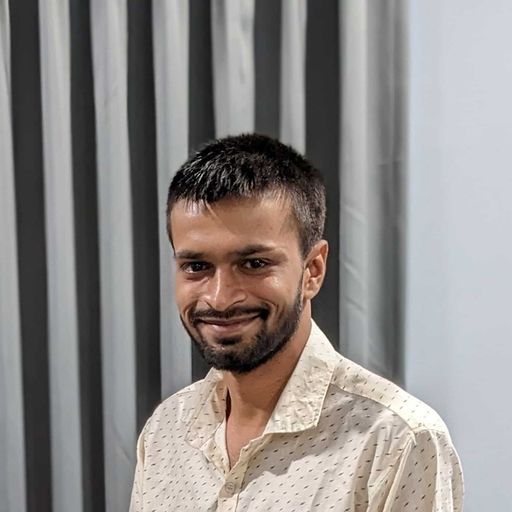
Design Converter
- Technologies
Flutter
React
Shopify
Android
iOS
Flutter
React
Shopify
Android
iOS
- Resource
University
Documentation
Templates
UI Accuracy
Discord
University
Documentation
Templates
UI Accuracy
Discord
- Pricing

Design Converter
Education
Last updated on Apr 3, 2025
•6 mins read
Last updated on Aug 28, 2023
•6 mins read

Software Development Executive - II
A Flutter and iOS developer.

Software Development Executive - I
Innovative Flutter developer & software engineer turning creative visions into sleek mobile experiences. He thrives on clean code, intuitive design, and pushing digital boundaries—one app at a time.
Material design has revolutionized the way we design and interact with digital interfaces. Material Design, developed by Google, provides a unified user experience across all devices and platforms. With the introduction of Material 3 , the latest version of Material Design, we have seen a plethora of new features and widgets that have further enhanced our ability to create stunning Flutter apps.
Material Design is more than just a design system; it's a complete guide for visual, motion, and interaction design across platforms and devices. It's based on the principles of the physical world and its textures, including how they reflect light and cast shadows. In this article, we will delve deep into the world of Material Design in Flutter apps and explore the new features and widgets introduced in Material 3.
Google launched Material Design to assist teams in creating high-quality digital experiences for Android, iOS, Flutter, and the web. It's a comprehensive design manual for visual, motion, and interaction across platforms and devices. To completely comprehend it, we must examine its concepts, components, and benefits.
The principles of Material Design are based on the physical world and its textures, including how they reflect light and cast shadows. Material surfaces can reimagine the mediums of paper and ink.
The first principle is Material is the metaphor. A material metaphor is the unifying theory of rationalized space and a system of motion. The material is grounded in tactile reality, inspired by the study of paper and ink, yet technologically advanced and open to imagination and magic.
The second principle is Bold, graphic, and intentional. It emphasizes bold intentions, the foundational elements of print-based design—typography, grids, space, scale, color, and the use of imagery. Deliberate color choices, edge-to-edge imagery, large-scale typography, and intentional white space create a bold and graphic interface that immerses the user in the experience.
The third principle is Motion provides meaning. Motion respects and reinforces the user as the prime mover. Primary user actions are inflection points that initiate motion, transforming the design.
Material Design has a rich collection of components to help developers create interactive and beautiful apps. These components include buttons, cards, dialogs, lists, sliders, and more. Each component has its own specifications and guidelines on how to use it effectively.
For instance, a button in Material Design is more than just a clickable element; it has different states (enabled, focused, pressed, disabled), and it can contain text, an icon, or both. Similarly, a dialog in Material Design is not just a simple pop-up window; it can contain a variety of elements such as title, content, and actions, and it also has its own behavior and animations.
Material Design offers numerous benefits for both developers and users.
For developers, it provides a comprehensive and flexible design system that can be easily implemented in their apps. It offers a rich set of components, animations, and styles that can help developers create beautiful and consistent apps without having to start from scratch.
For users, it offers a familiar and consistent user experience across different apps and platforms. It uses visual cues, motion, and interaction patterns that are grounded in reality, making it intuitive and easy to use.
Moreover, it is adaptive and responsive, meaning it can provide an optimal viewing and interaction experience for any screen size, device, or orientation. This makes it a great choice for creating modern, user-friendly Flutter apps that can run on any platform.
The relationship between Flutter and Material Design is a symbiotic one. Flutter, with its rich widget collection and flexible UI, provides the perfect platform to implement the principles and components of Material Design.
Flutter implements Material Design using a rich set of Material widgets. These widgets help developers create visually stunning and interactive UIs that adhere to the guidelines of Material Design.
When you create a Flutter app, you can choose to use Material Design by wrapping your app in the MaterialApp widget. This widget provides many features that are essential for a Material Design app, such as theme, navigation, and text direction.
1 // Example of using MaterialApp in Flutter 2 void main() { 3 runApp(MaterialApp( 4 title: 'My Flutter App', 5 theme: ThemeData( 6 primarySwatch: Colors.blue, 7 ), 8 home: MyHomePage(), 9 )); 10 } 11
Flutter provides a wide range of Material widgets that you can use to create your app UI. These widgets include AppBar, FloatingActionButton, IconButton, Drawer, Card, Dialog, and many more. Each widget is designed to be easy to use and customizable, allowing you to create a unique and beautiful app.
For instance, the AppBar widget provides a toolbar at the top of the screen, which usually contains a title, actions, and a back button. The FloatingActionButton, on the other hand, is a circular button that hovers over the interface and is used for a primary action in the app.
1 // Example of using AppBar and FloatingActionButton in Flutter 2 Scaffold( 3 appBar: AppBar( 4 title: Text('My Flutter App'), 5 ), 6 body: Center( 7 child: Text('Hello, world!'), 8 ), 9 floatingActionButton: FloatingActionButton( 10 onPressed: _incrementCounter, 11 tooltip: 'Increment', 12 child: Icon(Icons.add), 13 ), 14 ) 15
One of the great things about Flutter is its flexibility. You can customize almost every aspect of your app, including its look and feel. When it comes to Material Design, Flutter allows you to customize the theme of your app, including the color scheme, typography, and shapes.
The ThemeData class in Flutter is used to hold the color and typography values for a material design theme. You can create a custom ThemeData and pass it to the MaterialApp widget to customize the appearance of your app.
1 // Example of customizing Material Design theme in Flutter 2 ThemeData( 3 primaryColor: Colors.blue, 4 accentColor: Colors.green, 5 fontFamily: 'Roboto', 6 textTheme: TextTheme( 7 headline1: TextStyle(fontSize: 72.0, fontWeight: FontWeight.bold), 8 headline6: TextStyle(fontSize: 36.0, fontStyle: FontStyle.italic), 9 bodyText2: TextStyle(fontSize: 14.0, fontFamily: 'Hind'), 10 ), 11 ) 12
With the introduction of Material 3, the future of Material Design in Flutter looks bright. The new features and widgets give us more tools and flexibility to create stunning Flutter apps. And with the ongoing support and updates from the Flutter team, we can expect to see even more exciting developments in the future.
In this article, we've taken a deep dive into the world of Material Design in Flutter. Material Design and Flutter go hand in hand in creating visually appealing and user-friendly apps. With the introduction of Material 3, developers are equipped with more tools and flexibility to create engaging user experiences.
This article has guided you through the principles of Material Design, its implementation in Flutter, and the creation of a new Flutter project. As Flutter and Material Design continue to evolve, so will the possibilities for creating remarkable apps.
Tired of manually designing screens, coding on weekends, and technical debt? Let DhiWise handle it for you!
You can build an e-commerce store, healthcare app, portfolio, blogging website, social media or admin panel right away. Use our library of 40+ pre-built free templates to create your first application using DhiWise.